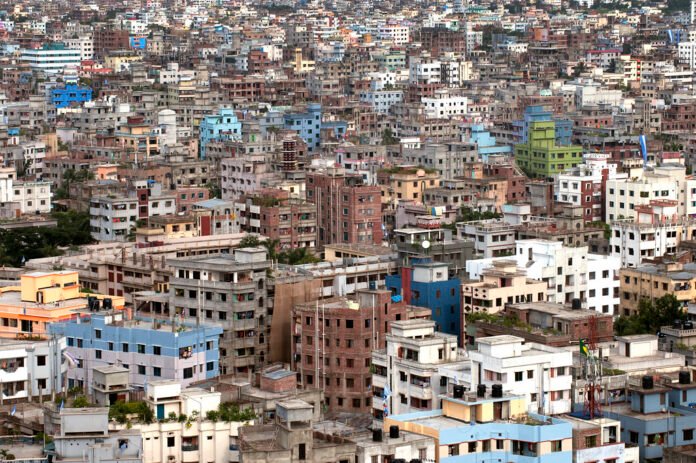Bangladesh is transitioning in health insurance. A full public health insurance system is in progress, aiming for Universal Health Coverage by 2032. Public and private insurance differ yet share similarities due to government reforms, market changes, and healthcare demands.
Similarities
- Goal of Expanding Healthcare Access:
Public and private health insurance sectors strive to enhance healthcare access and lessen medical costs. They align with the government’s goal of Universal Health Coverage (UHC) as detailed in Bangladesh’s 8th Five Year Plan and Sustainable Development Goals. - Focus on Financial Protection:
Government subsidies and private insurance aim to shield people from overwhelming healthcare expenses. This is vital since 74% of healthcare costs are paid directly by individuals. - Regulatory Environment:
Government bodies like the Ministry of Health and DGHS regulate both sectors. There’s a strong push to enhance governance, accountability, and quality standards for all healthcare providers.
Differences
- Scope and Coverage:
- Bangladesh’s public health insurance is in its infancy. Nationwide social health insurance isn’t fully operational. Currently, government-funded hospitals and clinics provide subsidized or free primary care. Plans for social health insurance and an independent Bangladesh Health Commission are in progress but not yet realized.
- Private health insurance, primarily found in cities and offered by private companies, covers hospital stays, outpatient services, diagnostics, and chronic disease care. It mainly caters to businesses, expatriates, and affluent individuals desiring quicker or superior service.
- Bangladesh’s public health insurance is in its infancy. Nationwide social health insurance isn’t fully operational. Currently, government-funded hospitals and clinics provide subsidized or free primary care. Plans for social health insurance and an independent Bangladesh Health Commission are in progress but not yet realized.
- Funding and Payment Mechanism:
- The public sector is heavily dependent on government funding, which struggles with underfunding and workforce shortages. Financing methods such as pooled prepayment and social health insurance are still being proposed or tested in pilot stages.
- The private sector thrives on market dynamics, with individuals or employers paying premiums. Companies such as Green Delta, MetLife, and Reliance are expanding their health insurance offerings, aiming for broader coverage through competitive plans.
- The public sector is heavily dependent on government funding, which struggles with underfunding and workforce shortages. Financing methods such as pooled prepayment and social health insurance are still being proposed or tested in pilot stages.
- Accessibility and Equity:
- Public health services are nominally accessible to all citizens but suffer from urban-rural disparities, quality gaps, and limited infrastructure in some regions. The poor and rural populations depend heavily on public services.
- Private insurance primarily serves urban and affluent groups because of its cost and availability. Rural and low-income populations generally lack access to private health insurance.
- Public health services are nominally accessible to all citizens but suffer from urban-rural disparities, quality gaps, and limited infrastructure in some regions. The poor and rural populations depend heavily on public services.
- Service Delivery and Quality:
- Public healthcare providers often face challenges related to overcrowding, resource limitations, and variable service quality.
- Private insurers generally offer better access to modern facilities, shorter waiting times, and greater customer service, albeit at higher costs.
- Public healthcare providers often face challenges related to overcrowding, resource limitations, and variable service quality.
Top Public Health Insurance Initiatives and Coverage in Bangladesh
Bangladesh lacks a traditional public health insurance system with government-owned insurers. Instead, it relies on government-funded programs and reforms to reach universal health coverage by 2032. Here are the main public health insurance initiatives and frameworks active or being developed in Bangladesh.
1. Government-Led Universal Health Coverage (UHC) Initiative
- Cost: Public healthcare services are mostly free or heavily subsidized for all Bangladeshi citizens at government hospitals and clinics.
- Available Services/Coverage Features: Includes primary care, emergency services, maternity care, vaccination programs, chronic disease management, and essential hospital treatments.
- Open for All or Limited: Open to all citizens; expatriates and visitors rely mostly on private insurance or out-of-pocket payments.
- Core Financial Features: Fully financed by government revenues and development aid. Out-of-pocket spending still accounts for about 74% of total health expenditure, highlighting the need for improved coverage.
- Consumer Satisfaction Score: Estimated around 7.5/10 — appreciated for accessibility but criticized for overcrowding and limited specialty care.
2. Directorate General of Health Services (DGHS) Public Health Facilities(Official website: https://dghs.gov.bd/)
- Cost: Services provided free or at nominal fees at public hospitals and clinics nationwide.
- Available Services/Coverage Features: Wide range of inpatient and outpatient services including diagnostics, surgeries, and maternal-child health.
- Open for All or Limited: Open to the general public with special focus on underserved rural populations.
- Core Financial Features: Government-funded with additional support from international agencies; limited direct insurance model, more service provision.
- Consumer Satisfaction Score: Approximately 7.0/10 — good reach but challenges with service quality and waiting times.
3. Social Health Insurance (SHI) – Proposed Model
- Cost: Not yet operational; projected premiums and government subsidies to be established after policy rollout.
- Available Services/Coverage Features: Will aim to pool risks and funds for outpatient, inpatient, maternity, and preventive services across public and private providers.
- Open for All or Limited: Intended for all citizens, especially targeting low-income groups and informal workers.
- Core Financial Features: A prepaid pooled financing system to reduce out-of-pocket expenses and improve financial protection.
- Consumer Satisfaction Score: Not applicable (pilot phase); expected positive impact once implemented.
4. Bangladesh Health Sector Reform Commission
- Cost: Reform-driven, not a direct insurer; influences funding allocations and health financing mechanisms.
- Available Services/Coverage Features: Oversees integration and quality improvement across public health services to enhance access and efficiency.
- Open for All or Limited: Impacts all public health service users indirectly.
- Core Financial Features: Proposes decentralization and new funding streams including insurance contributions.
- Consumer Satisfaction Score: Not directly applicable.
5. Public-Private Partnership (PPP) Pilot Programs
- Cost: Varies; PPP schemes often subsidized to lower patient costs.
- Available Services/Coverage Features: Expands access to specialized and diagnostic services through private partnerships with government subsidies.
- Open for All or Limited: Initially targeted to specific districts or populations; plans for expansion.
- Core Financial Features: Shared financial risk between government and private partners, designed to improve service quality and access.
- Consumer Satisfaction Score: Early results positive, around 7.8/10 for improved access and service quality.
Top Private Health Insurance Providers in Bangladesh
Bangladesh’s private health insurance sector is developing, with significant growth in urban areas due to rising demand for quality healthcare and financial protection. Established insurers provide diverse health insurance products for corporate clients, expatriates, and individuals. Here are the leading private health insurers in Bangladesh, each detailed by cost, coverage, accessibility, financial stability, and customer satisfaction.
1. Green Delta Insurance(Official website: https://www.greendelta.com/)
- Cost: Competitive premium rates varying by plan type, age, and coverage limits; tailored corporate plans available.
- Available Services/Coverage Features: Covers inpatient and outpatient treatment, hospitalization, surgery, maternity, emergency care, and some chronic illness coverage. Offers group and individual plans.
- Open for All or Limited: Open to individuals, families, and corporate clients, mostly urban-centric.
- Core Financial Features: Strong capital base with diversified insurance portfolio; risk pooling and cashless hospital networks supported.
- Consumer Satisfaction Score: Estimated around 7.8/10 — praised for customer service and claim processing speed.
2. MetLife Bangladesh(Official website: https://www.metlife.com.bd/)
- Cost: Moderate to high premiums depending on coverage options and rider add-ons.
- Available Services/Coverage Features: Offers comprehensive health insurance products including critical illness cover, maternity benefits, hospitalization, outpatient services, and wellness programs.
- Open for All or Limited: Available to individual and corporate customers, with growing presence in urban markets.
- Core Financial Features: Part of a global insurance group; benefits from strong reinsurance and financial backing.
- Consumer Satisfaction Score: Around 8.0/10 — known for reliability and claim transparency.
3. Prime Insurance (Official website: https://primeinsurance.com.bd/)
- Cost: Affordable premiums with flexible coverage packages tailored to client needs.
- Available Services/Coverage Features: Includes hospital and surgical expenses, ambulance fees, maternity coverage, and annual health check-ups.
- Open for All or Limited: Mainly serves individual policyholders and SMEs; expanding market share.
- Core Financial Features: Well-established locally with steady financial performance and strong customer support.
- Consumer Satisfaction Score: Approximately 7.5/10 — valued for easy enrollment and prompt claim settlement.
4. Reliance Insurance(Official website: https://www.relianceinsurance.com.bd/)
- Cost: Mid-range premiums with options for both basic and comprehensive coverage.
- Available Services/Coverage Features: Health insurance plans cover inpatient treatment, outpatient care, maternity, emergency services, and diagnostic tests.
- Open for All or Limited: Accessible to individuals and corporate clients, with a focus on urban clients.
- Core Financial Features: Solid market presence and financial stability; claims handled via an extensive hospital network.
- Consumer Satisfaction Score: Around 7.6/10 — appreciated for responsiveness and policy flexibility.
5. Jiban Bima Corporation (JBC)(Official website: https://jbc.gov.bd/)
- Cost: Government-owned life insurance corporation offering health riders; premiums vary based on life insurance plan chosen.
- Available Services/Coverage Features: Health benefits mainly through riders on life insurance policies; hospitalization, critical illness cover, and accident benefits.
- Open for All or Limited: Open to the public, with wide geographic reach including rural areas.
- Core Financial Features: Government backing ensures financial solidity; premium collection and claim process streamlined.
- Consumer Satisfaction Score: About 7.2/10 — recognized for accessibility but limited standalone health coverage options.
READ MORE: Private and public health insurance of Argentina (Make informed choices)


